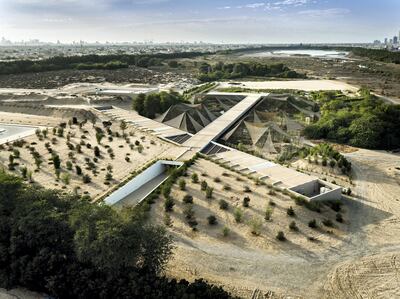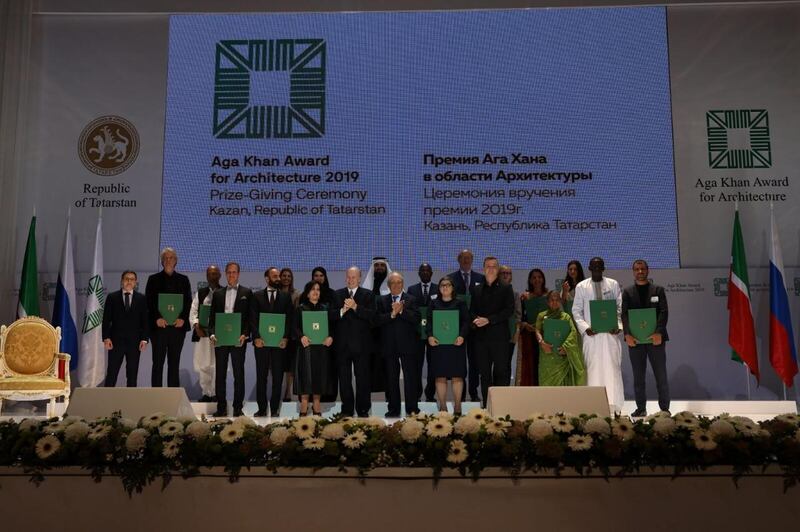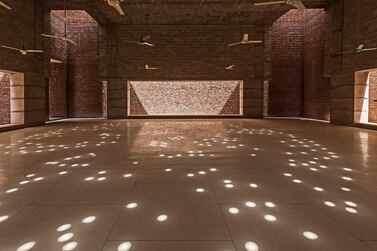The Aga Khan has called on architects to find solutions to "the daunting task of helping one another to live together in dignity" in the face of increased economic inequality, as well as the rising threat of climate change.
The spiritual leader of the Ismaili Muslim community and the award's benefactor also pushed Muslims to engage with the natural world and the challenges it poses, stating that “the Holy Quran asks Muslims not to be passive recipients of our natural habitat but instead to be faithful servants of the divine creation”.
Speaking at the Aga Khan Award for Architecture presentation ceremony in Kazan, Russia, Prince Karim Aga Khan said: "Human challenges seem to intensify at an accelerating pace these days – climate change, economic inequalities, epidemics, political polarisation, population displacements and the daunting task of helping one another to live together in dignity.
“[The] close relationship of architecture to the quality of human experience has a particularly profound resonance in the developing world. I believe that we all have a responsibility to improve the quality of life whenever and wherever the opportunity arises.
“Our commitment to influencing the quality of architecture – intellectually and materially – grows directly out of our commitment to improving the quality of human life.”
The Aga Khan went on to urge Muslims "to foster a rich dialogue with non-Islamic cultures, including diverse religious traditions" and suggested that "architecture can lead the way in this effort".
Six projects, including the Wasit Wetland Centre in Sharjah, received an Aga Khan Award for Architecture at the ceremony, which was held at the Musa Jalil Tatar Academic State Opera and Ballet Theatre.
The awards, which the Aga Khan launched in 1977, are held every three years and recognise projects that respond to the needs of Islamic societies around the world. More than 380 sites have been assessed in this cycle, before a shortlist of 20 was drawn up, including three from the UAE.
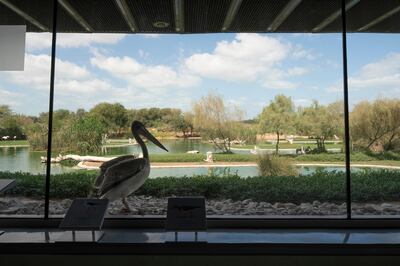
The Wasit Wetland Centre, which transforms a wasteland into a wetland, was designed by Emirati architects Farid Esmaeil and Ahmed Al Ali. Constructed in 2015, it is a wildlife park featuring a viewing gallery, where visitors can see birds in their natural habitat, a café and a multipurpose centre with views out over the wetlands. There are also six bird hides positioned around a large lake.
"It was very unexpected, the process is very intense, starting from the nomination," Esmaeil told The National. "It was a great feeling, the team, everyone, was very happy."
Al Ali added: “We thought this could give a different perspective of what Islamic architecture could be, not in terms of its form but in terms of its mission.
"We are passing through this life and we should leave minimal impact on the planet and try as much as possible to leave the things we are using for the next generation and not to destroy habitats."
The jury described the Wasit Wetland Centre as “a remarkable, indeed unique, collaborative project combining architectural excellence with a deep commitment to ecological imperatives”.
Other winning projects include a floating school in Bangladesh, a museum in Palestine and a series of redeveloped community spaces in Tatarstan, Russia. The winning architects share a $1 million (Dh3.6 million) prize.
Winners of the 2019 Aga Khan Award for Architecture
Bahrain – Revitalisation of Muharraq
The project, which highlights the World Heritage site’s pearling history, was first initiated as a series of restoration and reuse projects. The project evolved into a comprehensive programme that aimed to re-balance the city’s demographic makeup by creating public spaces, providing community and cultural venues, and improving the overall environment.
Bangladesh – Arcadia Education Project
The project in South Kanarchor is a modular structure that takes a novel approach to a riverine site that is often flooded for five months every year. Rather than disrupting the ecosystem to create a mound for a building, the architect devised the solution of an amphibious structure that could sit on the ground or float on the water, depending on seasonal conditions.
Palestine – Palestinian Museum
The project in Birzeit, which crowns a terraced hill overlooking the Mediterranean, is the recipient of the LEED Gold certification because of its sustainable construction. The zigzagging forms of the museum’s architecture and hillside gardens are inspired by the surrounding agricultural terraces, stressing the link between the land and Palestinian heritage.
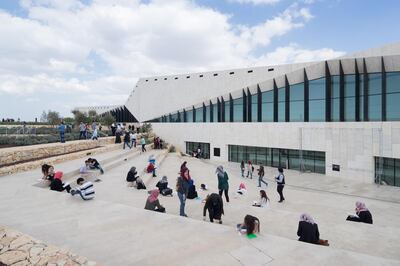
Russian Federation – Public Spaces Development Programme
A programme in the Republic of Tatarstan that, to date, has improved 328 public spaces all over Tatarstan. The ambitious programme sought to counter the trend toward private ownership by refocusing priorities on quality public spaces for the people of Tatarstan. It has now become a model throughout Russia.
Senegal – Alioune Diop University Teaching and Research Unit
The project in Bambey, where a scarcity of resources led to the use of bioclimatic strategies, includes a large double roof canopy and latticework that avoids solar radiation but allows air to flow through it. By employing familiar construction techniques and following sustainability principles, it succeeded in keeping costs and maintenance demands to a minimum, while still making a bold architectural statement.
United Arab Emirates – Wasit Wetland Centre
Wasit Wetland Centre, in Sharjah, is a design that transformed a wasteland into a wetland and functioned as a catalyst for biodiversity and environmental education. While its indigenous ecosystem has been restored, it has also proven to be a popular place for visitors to appreciate and learn about their natural environment.
